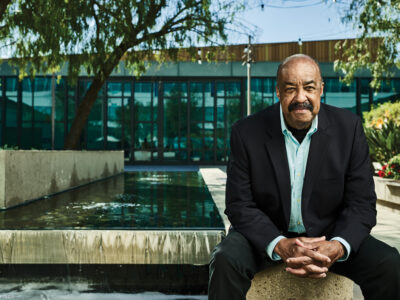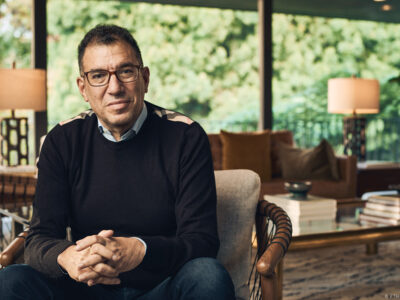For anyone who keeps tabs on Katie Couric, or who simply watches primetime network television, it would have been hard to miss the celebrity-studded telethon staged last September by an entertainment-industry charity called Stand Up to Cancer (SU2C). The hour-long fundraiser was simulcast by NBC, ABC, and CBS in over 170 countries and featured performances from stars ranging from Miley Cyrus to Mary J. Blige.
It spurred donations that eventually topped $100 million, earmarked for research by multidisciplinary “dream teams” combining basic scientists, clinical practitioners, and patient advocates. The initiative focuses on bridging basic and applied research, accelerating the transition of new treatments from laboratory bench to hospital bedside. This May, after considering some 237 proposals, SU2C selected a group led by Craig Thompson, director of Penn’s Abramson Cancer Center, as the largest beneficiary among five grant finalists. The team, co-led by Daniel Von Hoff, physician-in-chief at the nonprofit Translational Genomics Research Institute (TGen) in Arizona, will receive $18 million to develop and test a new approach to treating pancreatic cancer. It will also include members based at Princeton, Johns Hopkins University, and the Salk Institute in San Diego.
Pancreatic cancer is the fourth-highest cancer killer in the United States, and one of the quickest. Over 90 percent of patients die less than a year after being diagnosed. It has stymied doctors and researchers. “We really haven’t improved the therapy at all in the last 30 years,” Thompson says. “We’re still using essentially the same drugs [that we have] throughout my entire academic career, with very poor results.”
The Penn/TGen team’s approach, dubbed “Cutting Off the Fuel Supply,” will be based on identifying and interrupting the way pancreatic cancer cells derive energy to replicate themselves. Unlike most other cancers, which rely on glucose to power their proliferation, pancreatic cancer cells “are addicted to glutamine,” a common amino acid in the human bloodstream, Thompson says.
When pancreatic tumors siphon off the body’s glutamine supply, patients can suffer extreme weight loss. Furthermore, the way cancer cells metabolize the nutrient generates byproducts that spur surrounding normal cells to secrete growth factors that accelerate the cancer’s growth, creating a vicious feedback loop.
Through the SU2C grant, “We have for the first time assembled a team that can fully profile a set of tumors, at all the levels that people think are important,” Thompson says. “We and Princeton have assembled the best ability, we would say in the world, to study tumor-cell metabolism. Hopkins has assembled the best genetic profiling of the tumors. The Salk Institute, along with the group that Arizona has put together, has the best program to study what’s called the stromal reaction to tumors”—the way surrounding tissue can be co-opted into helping a tumor grow.
“And because we’re going to be doing this in the surgery suites at Penn and at Hopkins,” he adds, “everything will be collected and sent to the different universities, so that on an individual tumor everyone will get all that information.”
The team’s twofold proposal dovetails with SU2C’s emphasis on accelerating the application of laboratory findings to bedside treatment. They aim to develop a PET-scan methodology that will enable patients to be scanned for tumors that selectively take up glutamine (PET scans now typically focus on glucose). They will also conduct human trials on a series of therapeutics developed at Penn that interfere with cells’ ability to use glutamine.
Thompson adds that the high-profile nature of the grant has had an additional benefit.
“Going through competition meant [that our proposal was] vetted by a very distinguished group of clinical and basic-science researchers. And that’s gotten a lot of other groups interested,” he says. “Although the funding hasn’t even started—and won’t start for several months yet—it’s really made a lot of other people in the community … come to us and ask, ‘Can we help?’ And so there’s a much larger consortium right now than just the people who were put together, who are thinking along the same lines and testing the ideas that we’ve proposed.”
—T.P.




